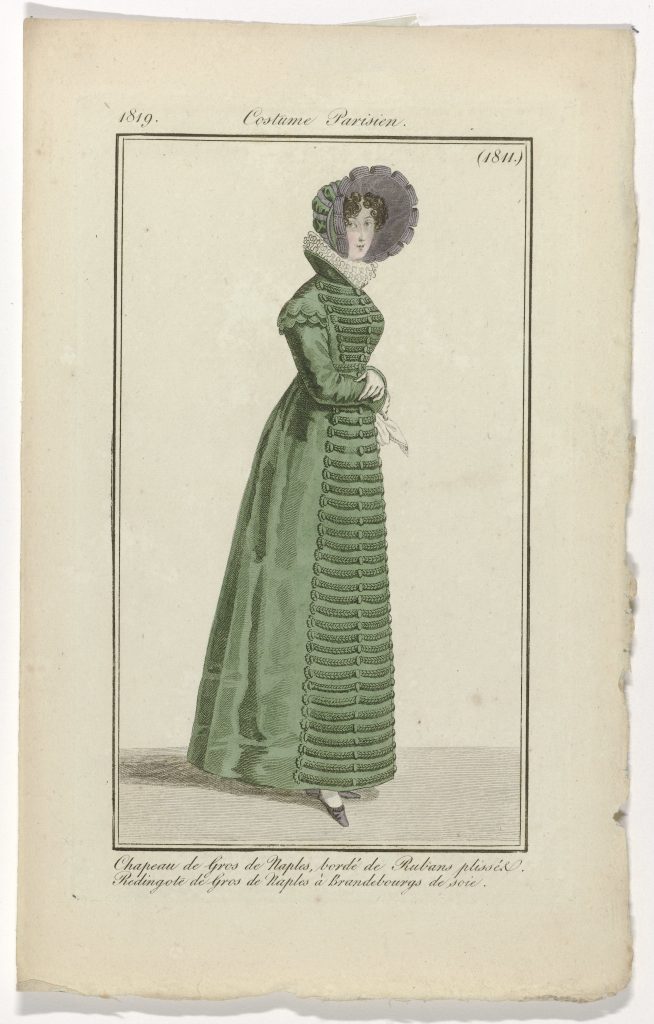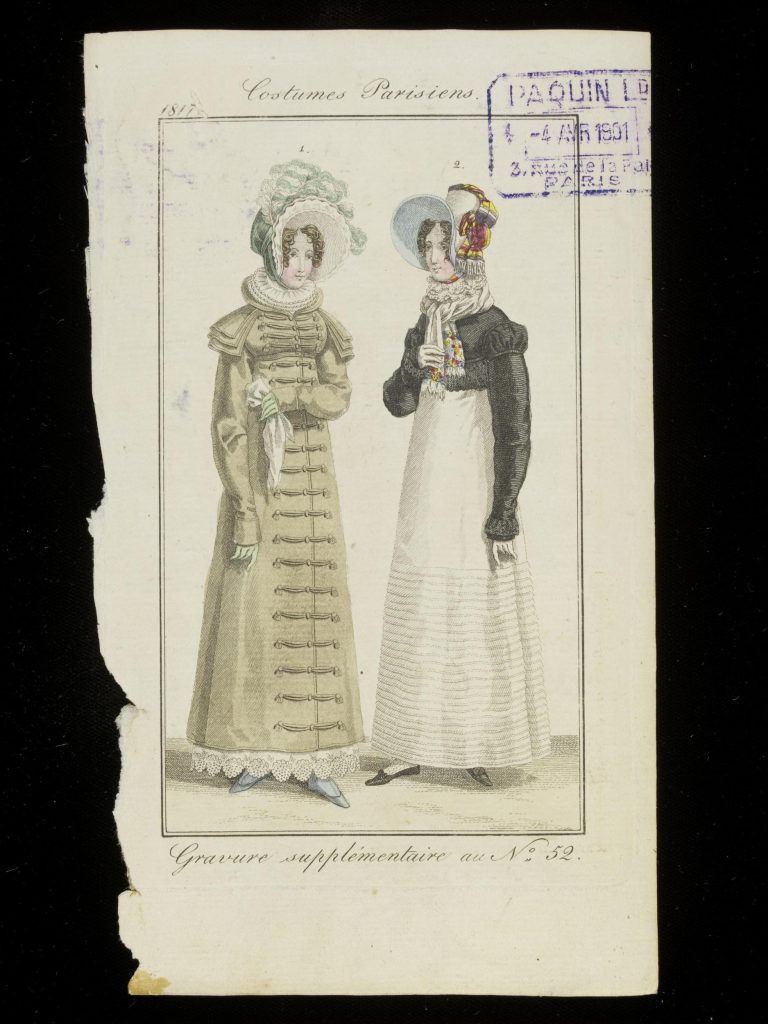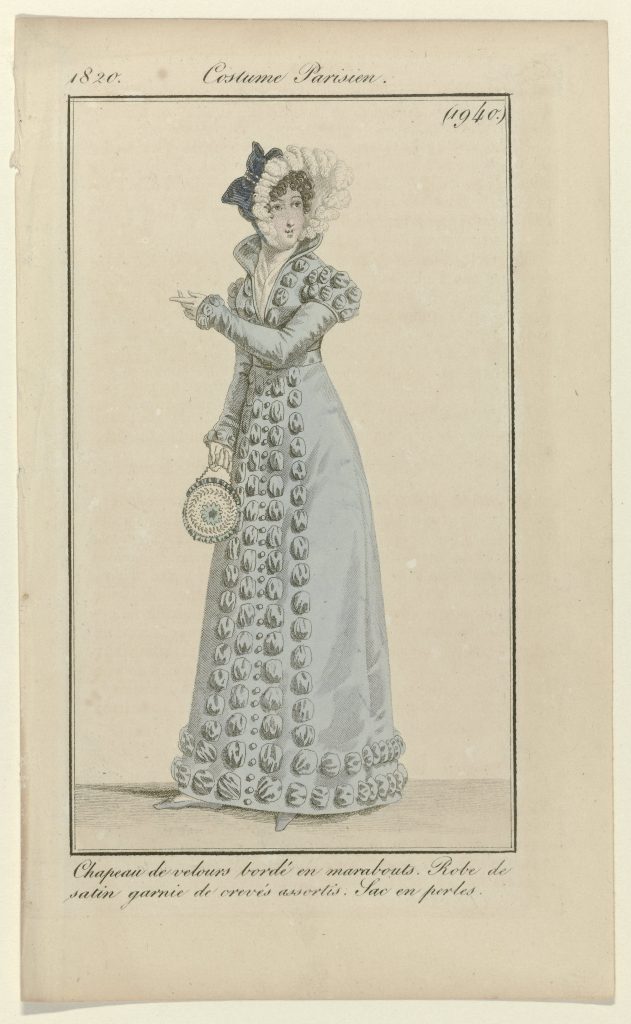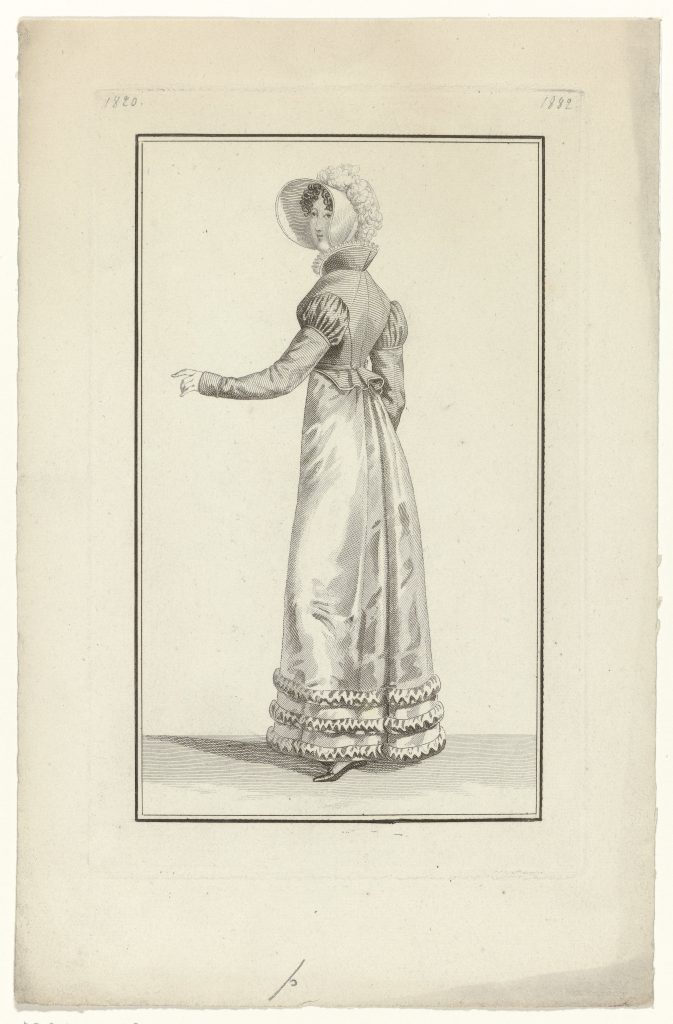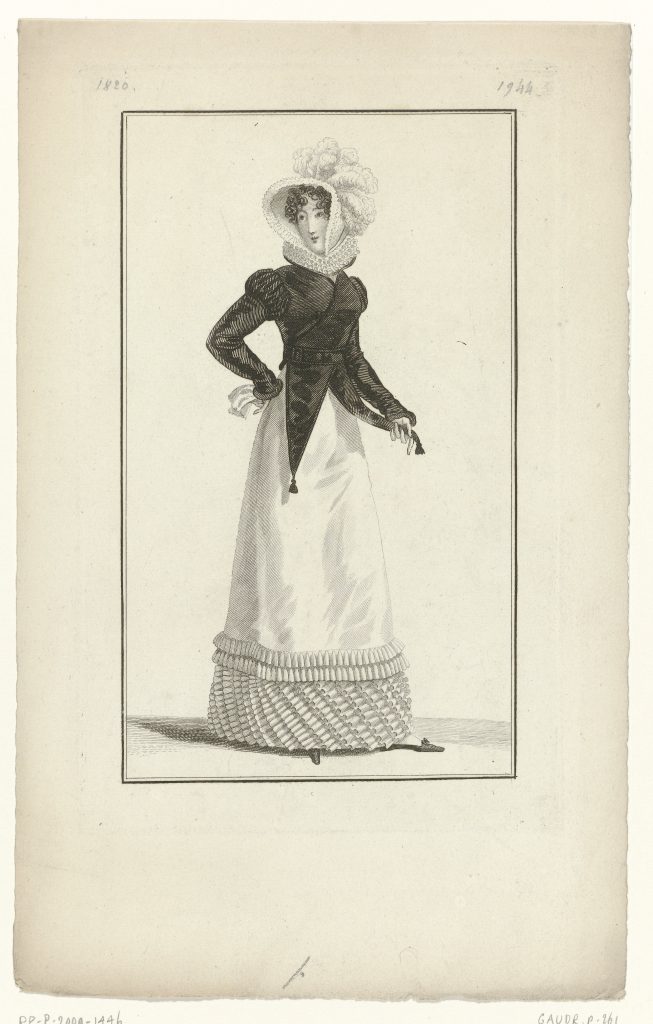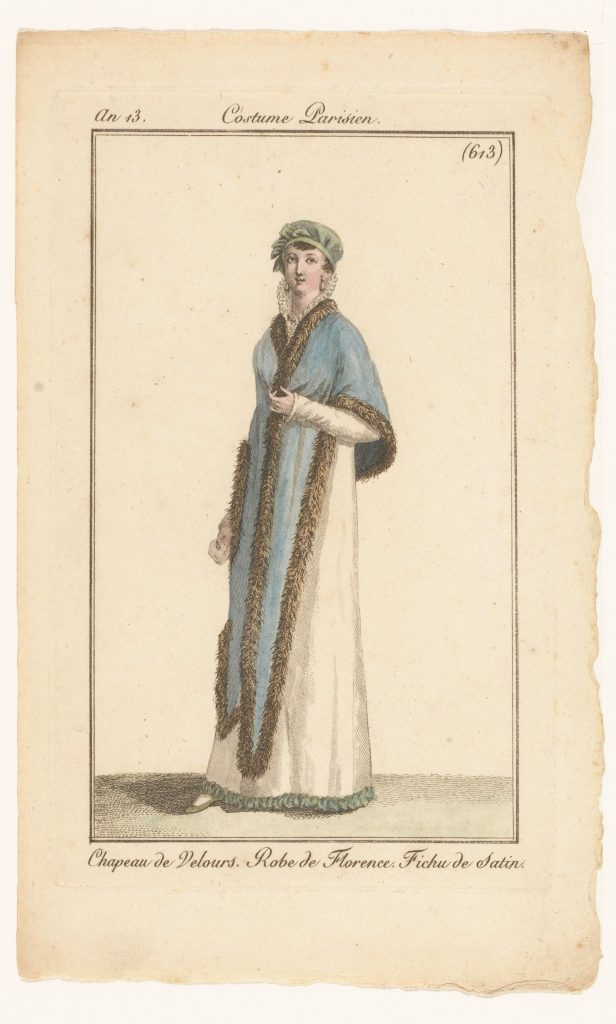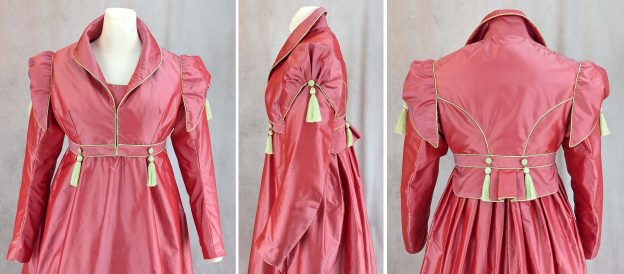The pattern is coming soon….
In our journey through the world of historical fashion, we’ve uncovered the enchanting allure of Regency dresses. However, the story doesn’t end there. To complete your transformation into a character from a Jane Austen novel or the grand ballrooms of Bridgerton, we introduce a perfect companion piece – a Regency Spencer Jacket. This exquisite garment, like the dress, has been meticulously recreated with a historical nod, making it the ideal addition to your Regency-inspired ensemble.
Just as we ventured into the realm of the Empire dress, it’s time to explore the creation of this captivating Spencer Jacket. Following the same commitment to historical techniques and style, this piece embraces the authenticity of the Regency era while adding a modern twist. Whether you’re a seasoned seamstress or a budding costume enthusiast, this blog post will guide you through crafting this elegant jacket with step-by-step instructions and detailed images. So, as we delve deeper into the world of Regency fashion, prepare to embark on another sewing adventure, one that promises to bring the grandeur of Bridgerton and the Regency era to life in your wardrobe.
The time of the Empire/ Regency lasted from 1795 to 1820 and can be divided roughly into three subcategories of fashion styles.
Contrary to persistent fashion misconceptions, such as the ‘muslin disease,’ numerous period fashion illustrations depict an array of coats, jackets, and overdresses in a spectrum of colors and diverse materials, including silk, fabric, velvet, and fur.
A redingote, derived from the English ‘riding coat,’ is a full-length coat crafted from woolen fabric. Redingotes were frequently embellished with braids, imitating the style of hussar military jackets.
A pelisse, on the other hand, is a lightweight coat or overdress that ranges from calf-length to floor-length.
A spencer, a shorter jacket, could feature a peplum or not, depending on the design.
Additionally, individuals of the era often opted for colored pashmina shawls and tunics.
It’s worth noting that these terms were not consistently used in fashion publications of the time and have evolved over the years.
